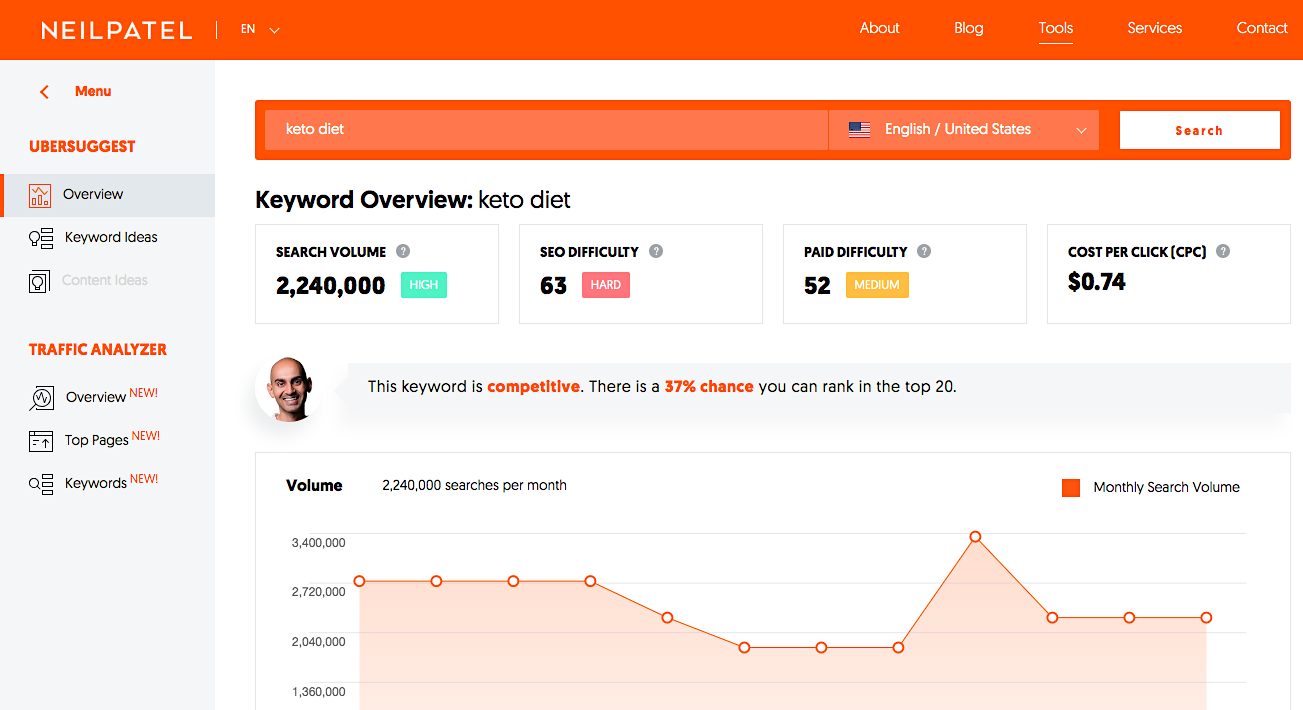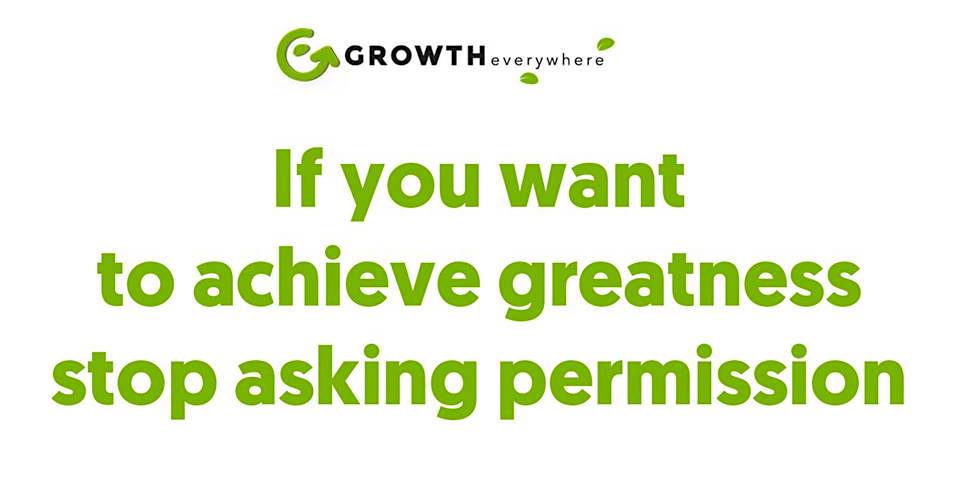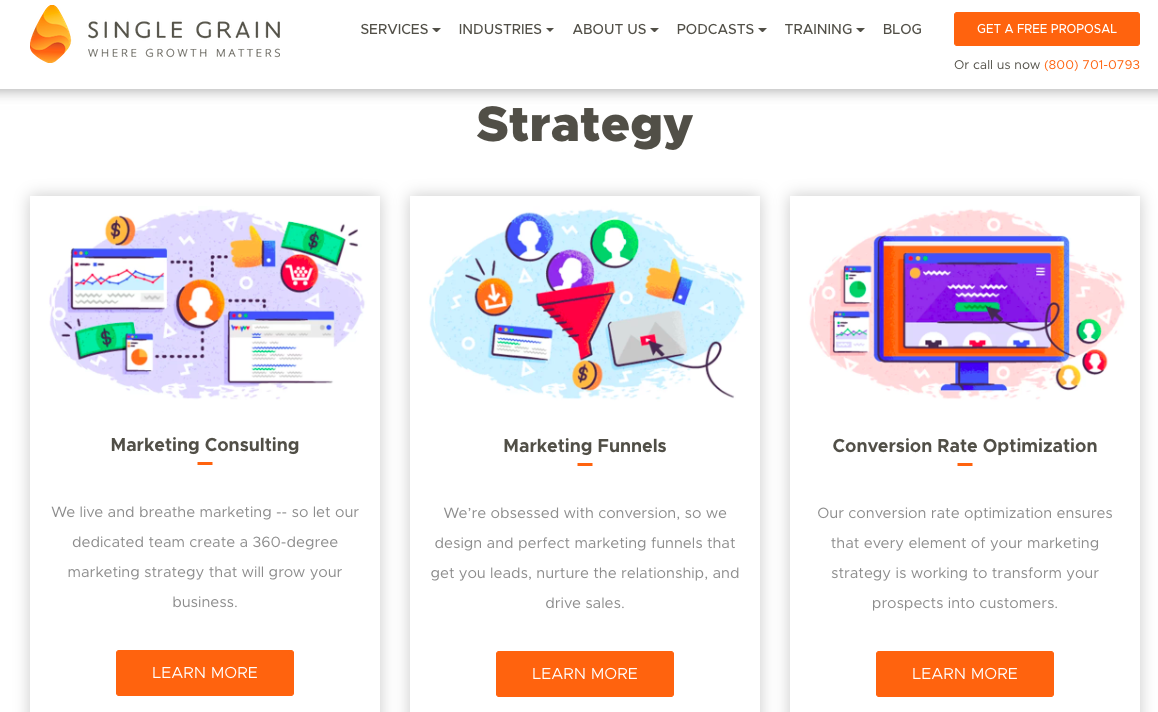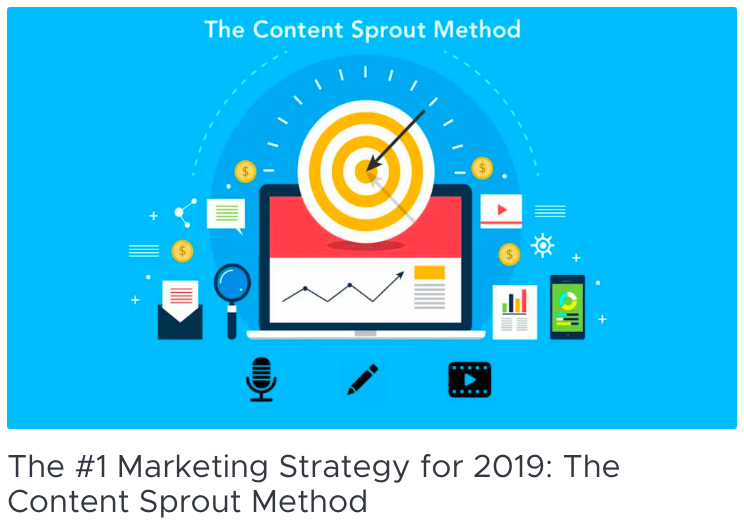The Craziest Content Marketing Tactic Ever
If you’re in a position where your business is pretty successful and you’re ready to take it to the next tier, you need to scale up your marketing. But how? The best way to level up your business is to set yourself apart by doing something your competitors aren’t doing.
My content marketing advice? Stop creating content, and instead create a product and leverage it as content marketing. It’s called product-led growth, a marketing tactic you probably haven’t even considered. And, yeah, it’s a little crazy.
Let me explain….
What Is Product-Led Growth?
Product-led growth (PLG), a term coined by OpenView Venture Partners, is defined as:
“A go-to-market strategy that relies on product features and usage as the primary drivers of customer acquisition, retention and expansion.”
In simple terms, that means you create an awesome product, get people using it and recommending it to others, and then employ it as a marketing tool to make more money.
The gold standard for PLG is Slack. Slack makes work easier, but in order for it to work at maximum effectiveness, everyone on your team needs to be using it. So right off the bat, there isn’t just one person signing up for Slack – it’s a whole group of people. That’s rapid growth.

Slack currently offers three tiers of service: free, standard and plus.
Many teams start out with the free version of a tool and scale up after getting accustomed to the features and benefits. The free version is essentially a marketing tool for the premium version. Share on XAnd when someone leaves their team or company and goes to a new organization, you know they’re going to ask, “Hey, have you guys thought about using Slack?”
This flow has allowed Slack to achieve huge growth in a relatively short period of time, just like other companies who’ve used PLG in similar ways, such as Dropbox and Expensify, have.
Check out our case study: Slack: The Fastest Business App Growth in History
Product-Led Growth Case Study: Neil Patel
On a recent episode of the Marketing School podcast, Neil talked about his foray into product-led growth. If you’re familiar with Neil, then you know he’s a blogging machine. But because of the competition that exists these days, he was starting to see diminishing returns on all the text-based content he was creating.
He realized that most people who blog don’t know how to build or grow products, which gave him an opportunity to do something his competition didn’t. Because Neil didn’t know how to build products, he looked for an opportunity to acquire one. He found Ubersuggest, a keyword tool which he now gives away – another way to differentiate himself from other keyword services:

Neil is in the business of helping brands get more web traffic, so a tool that helps users improve their SEO is a natural extension of his brand. It’s also a great marketing tool for getting people to his website – according to Neil, usage of Ubersuggest grows 10% month over month with very little marketing.
Everyone is blogging. Everyone is creating videos. Everyone has a podcast. But not everyone is offering products. That’s why I believe products are the next big form of content marketing. Share on XDive Deeper: 10 SaaS Business Lessons from $1B+ Unicorns (like Slack, Twilio, Lyft)
Another aspect of PLG is giving some or all of that product away for free to get customers using it (and loving it!). Neil’s keyword tool is totally free.
How you price your product depends largely on what your goals are for the product. If you simply want to drive traffic and leads, it might make sense to give your product away for free, especially if you think you can make up the cost of building it with new business.
If, on the other hand, your goal is to build another revenue stream, then you should price your product accordingly. If you give users a freemium option, make sure it’s good enough to make them want to upgrade, but not so good that they want to use the free version forever. Give them everything you can up front so that they truly know the value of the product they’ll be buying at the end of the trial.
Is PLG Right for You?
If you’re on the fence about using PLG for your business, ask yourself the following questions to help make a decision:
Do You Have a Killer Idea?
If you already have a product in mind and you know that it will generate amazing growth for you, build it before someone else does. If not, think about the “success gap” – the distance between your business goals and your customers’ desired results. Aside from your product or service, what will help your users to achieve success? That’s where your ideal product lies.
Do You Have the Resources?
Do you have a team that has the skills to build something? Do they have the time? If not, can you scrape together the budget to hire someone? Or, if you don’t want to do the work, crunch the numbers to see how much you can spend on acquiring a product.
Do You Actually Want to Create a Product?
PLG is a fantastic marketing channel, but it’s just one of many.
Dive Deeper:
- Omnichannel Marketing: Using the Content Sprout Method to Overcome Info Overload
- The #1 Marketing Strategy for 2019: The Content Sprout Method
- The Ultimate Guide to Running Instagram Stories Ads
Another Option: The Content Sprout Method
If you want to level up your content marketing without a product or tool, I recommend focusing on omnichannel marketing, the process of using multiple platforms to give your audience a multi-channel experience. It’s truly essential these days for reaching potential customers where they are.
At Single Grain, we rely most heavily on three marketing channels: YouTube, podcasts and this blog. If we create a piece of content – like a guide to marketing on Instagram – and we post it on the blog, people who read our blog will see it. People who follow us on Facebook or Twitter will see us promote it (if we’re lucky).
But what about our YouTube subscribers and podcast listeners? They’re probably interested in Instagram marketing help, but if they don’t know that our blog post exists, we lose out on those potentials leads. That’s why omnichannel marketing is so important.
The Content Sprout Method allows you to repurpose your content across channels so you A) don’t lose out on potential leads, and B) you get the maximum ROI for that content. It consists of the following three steps.
Step #1: Seed
Seed content is a piece of content that’s both meaty and popular. There’s a lot of value in it, and (ideally) it’s already getting traffic. Maybe it’s a 5,000-word, well-researched and up-to-date blog post. Maybe it’s a two-hour podcast interview. Maybe it’s a video of an hour-long presentation you gave at a conference. Whatever it is, it should lend itself to repurposing.
If you don’t have seed content, create some. Use a tool like BuzzSumo to find out what content is popular for your relevant keywords:

Then create better, more comprehensive content on the same topic, and promote it like crazy. When you start to see some stats on performance, choose the piece of content that’s generating the most traffic and engagement for the next step.
Step #2: Sprout
Once you’ve identified your seed content, it’s time to sprout it. Repackage it into a format that works for each of your marketing channels. It could be as simple as making a quote from an original blog post into an image for Instagram, or as complex as producing a podcast episode around it. It all depends on your time and resources.

Step #3: Pollinate
Once you have your content in every necessary format, it’s time to push it out. That’s where strategies like email and social media marketing come in. Once you have an idea of the tactics that generate the most engagement for you, put some ad dollars behind them to promote your content to a wider audience.
In marketing, it’s much easier to meet people where they are instead of trying to get them to come to you. The Content Sprout Method allows you to deliver the right messages to the right audience at the right place and time – and that gives you a huge advantage.
One word of advice: focus on one “seed” at a time and collect some data before you move onto the next one. Over time, you’ll identify areas where you can do less and where you need to do more to maximize your ROI.
If you try to sprout 20 seeds at once, you’re going to waste a lot of time on content types that won’t necessarily bring you any new leads. If that Instagram post that’s just a quote of something you wrote in a blog post performs better than a YouTube video on the same topic, then you’ve saved yourself a lot of time on the next sprout.
Dive Deeper:
- Hacking Email Marketing: 14 Tactics that Work [Infographic]
- Email Marketing Myths & Truths: How to Enhance Your Email Marketing Strategy
- The Beginner’s Guide to Crafting a Highly Effective Social Media Strategy in 2019
There’s No “Right Way” to Do Content Marketing
Whether you choose to A) create a tool or a product, B) employ the Content Sprout Method or C) simply ramp up your current content marketing strategy all depends on a lot of factors, including:
- Your business model
- Your industry
- Your available resources
- Your skills and knowledge
And those are just a few. How you determine the right content marketing tactics for your business comes down to asking yourself one question: What do I do well? Maybe what you do well, and what you’ve built your business around, is SEO. In that case, you could level up your content marketing in a few different ways:
- Launch a free tool that helps people improve their SEO (like Ubersuggest)
- Build a premium product that allows people to test SEO strategies
- Take a highly trafficked, comprehensive guide to SEO that you’ve published and turn it into one or more webinars, email courses, video series or podcasts
Which one of those will be most successful? You won’t know until you try.
Dive Deeper:
- How to Build a High-Performance Content Marketing Strategy
- How Machine Learning Is Transforming Content Marketing
- How to Actually Track Your Content Marketing Success
- 7 Content Marketing Hacks That’ll Crush it in 2019
Final Thoughts
Whichever road you take, don’t abandon traditional content marketing. It doesn’t provide the same ROI it used to, but that doesn’t mean it’s not still an effective channel for growing your business. It is. But it pays off to have other, newer tactics in the mix as well.
Marketing changes and evolves all the time, and the most successful businesses figure out how to change and evolve with it. I’m not saying you should try every new and shiny marketing trend that comes along. Rather, you should thoroughly examine each one to see if it has the potential to grow your business. If you don’t think it does, move along. You’ll save a lot of time and money that your competitors are wasting going after “The Next Big Thing.”






